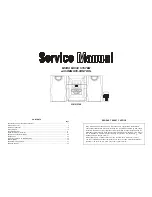
3 - System setup—Option setup
3–5
changed, and the
ENTER
key is then used to make
the setting.
3.3.1 Location display mode
When using the TM-D4000’s location facilities to
control an external device, the value of the location
points (
LOCATE DISPLAY MODE
) can
be displayed either on the main time counter (
7-
Seg LED
) or as a “pop-up” panel on the main
display screen (
LCD Screen Pop-up
).
These options are mutually exclusive, i.e. you can
only choose one.
3.3.2 Timecode source
The timecode displayed on the time counter can be
taken from the timecode source used for automation
timing (
Automation Sync
Source
), directly from a DTRS recorder
through the
REMOTE IN
terminal (
MDR ABS
Absolute Time
) or received at the
MIDI IN
terminal as MIDI timecode (
MIDI
IN MTC [MIDI Time Code]
). This
timecode source is also used when controlling exter-
nal devices (see 9, “Machine Control”). Again, only
one of these options can be selected.
3.3.3 Preferences
The
PREFERENCES
are as follows:
Fader
Auto MODULE Select
,
Select
MODULE Return
,
Select Link
and
Dial Edit
,
Automation
Fader Motors Inhibit
and
Balance Level CENTER 0dB
.
Any number of these preferences can be selected, as
indicated by a check mark in the checkboxes (
✔
).
3.3.4 Fader select
When checked, and the
MODULE
screen is cur-
rently displayed this option allows a module to be
selected whenever its fader is moved, in addition to
the usual method of pressing the
SEL
key.
3.3.5 Select MODULE return
When checked, this option allows the
MODULE
screen of the appropriate module to appear (even if a
MODULE
screen is not currently displayed) if the
SEL
key of the module is pressed and held for about
two seconds.
3.3.6 Select link
When checked, this option allows the stereo linking
of two adjacent modules (provided the left module is
odd-numbered) by pressing and holding the
SEL
key
of one module and pressing the
SEL
key of the other.
See 4.2.2, “Using the SEL keys to link channels”.
3.3.7 Dial edit
When checked, this option allows the
JOG
dial to be
used as a data entry dial for the on-screen control
pointed to by the triangular cursor, which is usually
controlled by a POD knob. In effect, this provides
another POD. In addition to this option being
checked, the
JOG/SHUTTLE
indicator must be off
when using the
JOG
dial in this way, to prevent the
JOG dial being used as a transport control.
3.3.8 Automation fader inhibit
The
Automation Fader Motors
Inhibit
setting allows the motorization of the
faders to be turned off or on for automation replay
(Read) purposes. See 2.4.1, “Turning fader motors on
and off”.
3.3.9 Balance level
When two channels are linked together as a stereo
pair, the pan controls change to a balance control, as
mentioned earlier. In the center position, the level
may either be set to
0dB
(checked) or a 3 dB cut
(unchecked).
3.3.10Oscillator
The integral line-up oscillator can be turned using the
left switch of POD 2 and the frequency adjusted with
the POD 1 control. It can be assigned to either the
left or right main output buss, (
L Buss
,
R buss
),
Both
of these, or neither using the
switches of POD 1. The left busses are the odd-num-
bered output busses (1, 3, 5, 7) and the left channel of
the stereo output buss. The right busses are the even-
numbered output busses (2, 4, 6, 8) and the right
channel of the stereo output buss.
The POD 1 rotary control is used to change the level
of the oscillator, relative to full-scale.
3.3.11Meter ballistics
The release rate (“fall time”) and peak hold time of
the meters and can be adjusted using the knobs of
PODs 3 and 4.
The release rate can be set to
Fast
,
Normal
or
Slow
.
The hold time can be set to
0sec
,
1sec
,
2sec
,
4sec
,
8sec
or
ß
. The final (infinity)
setting will hold the peak value until a new setting is
made (or the TM-D4000 is turned off!).
















































